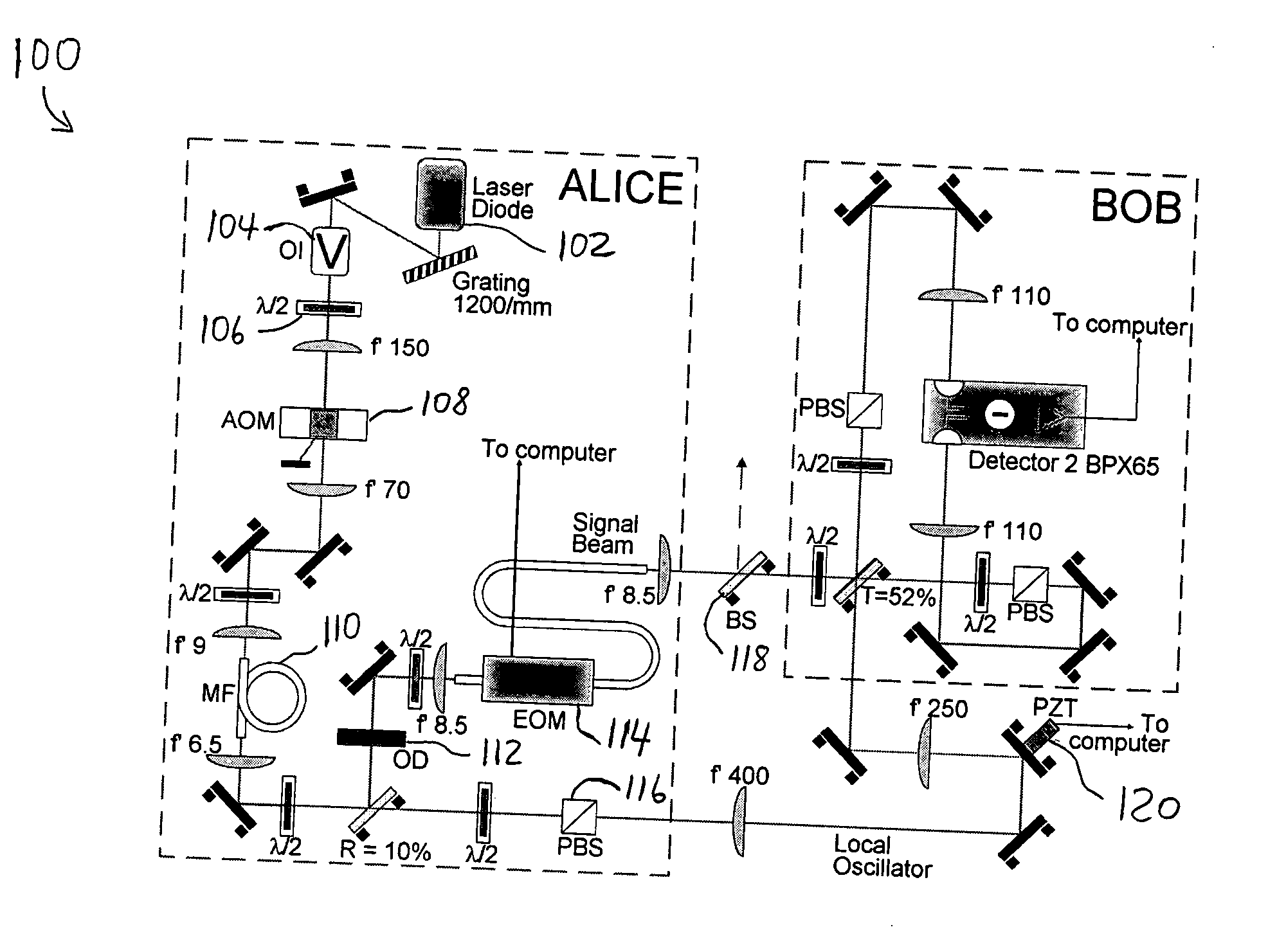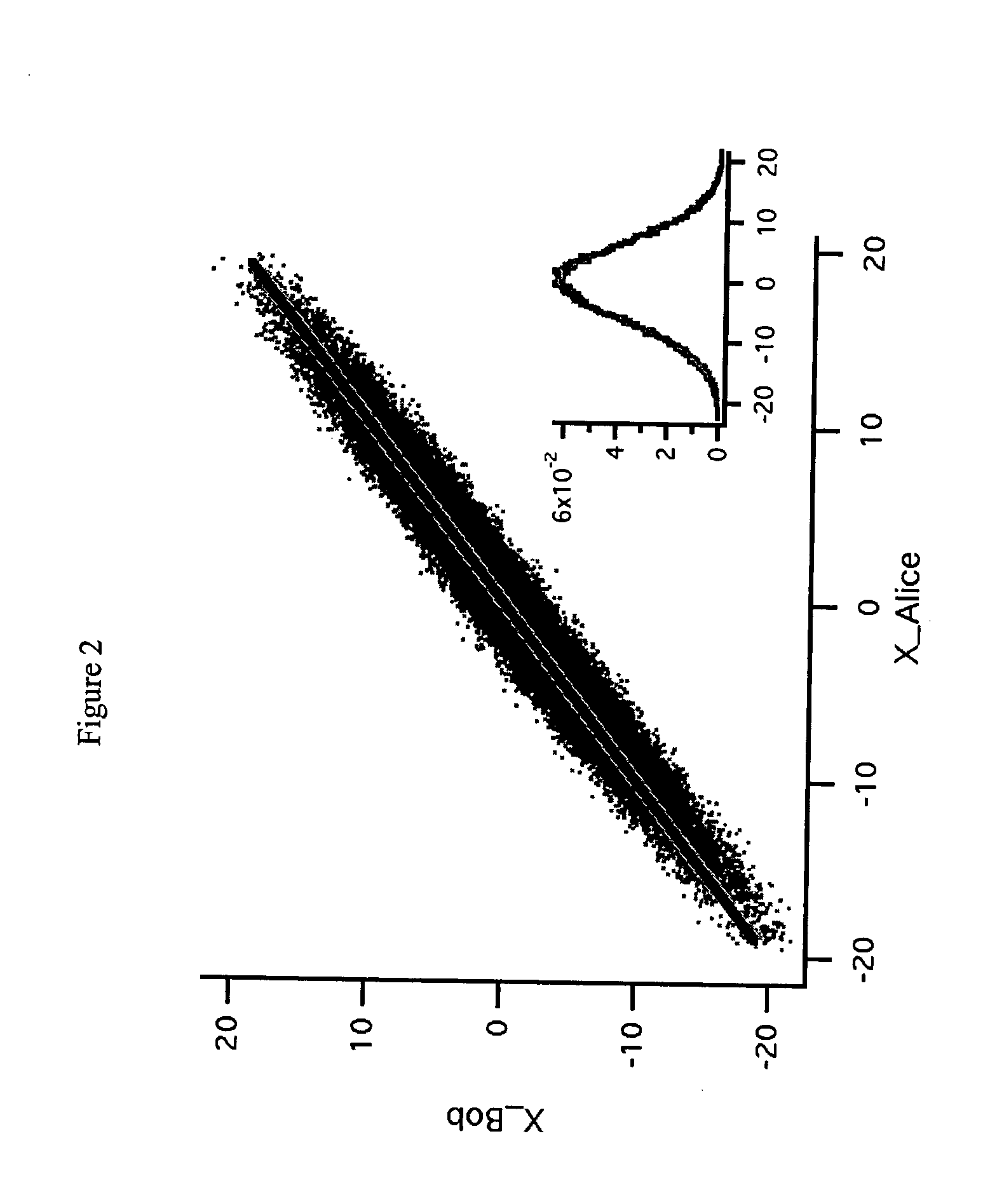High-rate quantum key distribution scheme relying on continuously phase and amplitude-modulated coherent light pulses
a distribution scheme and quantum key technology, applied in the direction of digital transmission, instruments, secret communication, etc., can solve the problems of limited security over the range, and achieve the effect of security level
- Summary
- Abstract
- Description
- Claims
- Application Information
AI Technical Summary
Benefits of technology
Problems solved by technology
Method used
Image
Examples
Embodiment Construction
[0044] One realisation of this quantum cryptographic scheme consists in modulating the quadrature components of coherent light pulses with a Gaussian distribution. The corresponding protocol is demonstrated in what follows. Dealing with Gaussian distributions makes the security of the entire protocol easier to analyse, but the scope of the present invention is not limited to such random distributions. Alternative continuous distributions may be used as well. Other improvements of the present invention can be foreseen, such as the use of more efficient reconciliation protocols that may potentially increase the achievable range.
[0045] The protocol described herein works by continuously modulating the phase and amplitude of coherent light pulses and measuring the quadrature components of the received coherent states. This clearly gives very important practical advantages to such a protocol, in view of the simplicity of the techniques needed to preparing and detecting coherent states. I...
PUM
 Login to View More
Login to View More Abstract
Description
Claims
Application Information
 Login to View More
Login to View More - R&D
- Intellectual Property
- Life Sciences
- Materials
- Tech Scout
- Unparalleled Data Quality
- Higher Quality Content
- 60% Fewer Hallucinations
Browse by: Latest US Patents, China's latest patents, Technical Efficacy Thesaurus, Application Domain, Technology Topic, Popular Technical Reports.
© 2025 PatSnap. All rights reserved.Legal|Privacy policy|Modern Slavery Act Transparency Statement|Sitemap|About US| Contact US: help@patsnap.com



